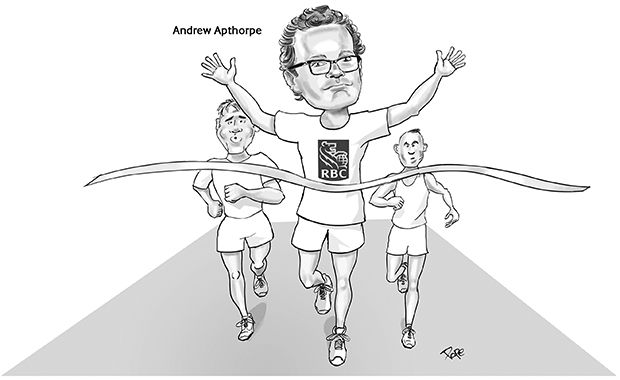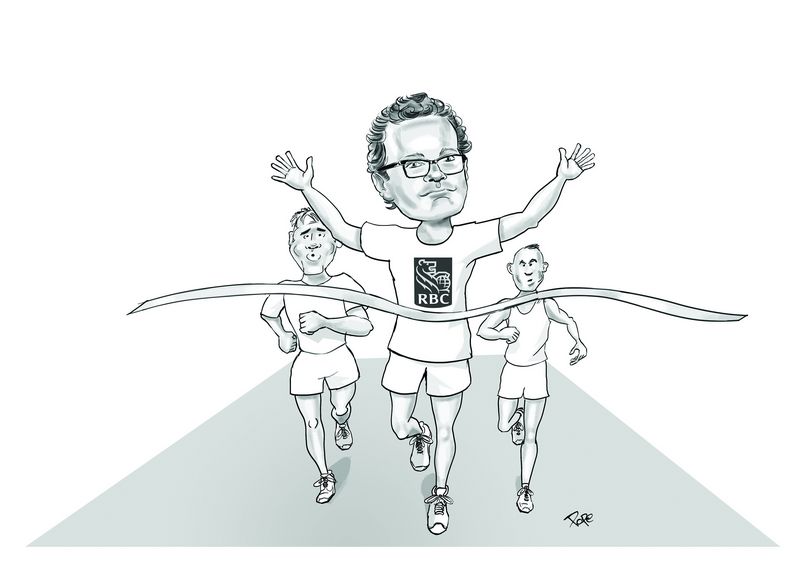If there is one word to describe RBC Capital Markets’ equity-linked business in 2014 it is momentum. The fledging platform has poached clients from bulge-bracket firms and increased issuance by 260% in one year. RBC Capital Markets is IFR’s Americas Structured Equity House of the Year.
Pitching a company when representing a bulge-bracket firm with an established track record and leading league table position is one thing, but simply getting through the door when one has none of these credentials is quite another. So for RBC Capital Markets to convince 18 companies to trust it on convertible bond issues (with a deal roster of just five from the previous years) is impressive.
RBC ran deals earning league table credit of US$3.3bn in the IFR Awards year for a 6.5% market share. Key was a platform that offered clients customised products, often without the risks traditionally associated with structured equity.
“When I came to RBC in October 2009 I recognised there was an opportunity to really fashion a business that provided a holistic solution to corporations, across convertibles and equity derivatives. It was a blank piece of paper,” said Andrew Apthorpe, global co-head of equity-linked origination. “I took the opportunity to build a business around fundamental buyers – on average we put 75% of our deals with fundamental buyers.”
Still, PDL BioPharma CFO Peter Garcia concedes there was a certain “leap of faith” when it mandated RBC to lead its US$300m, four-year CB in February.
The owner of a portfolio of drug patents already had established relationships with bulge-bracket firms – Bank of America Merrill Lynch was sole bookrunner of its US$131.7m principal of 2.875% CBs, issued in 2011, and execution hinged on participation of holders of the existing CB.
“In order to get this deal done we really did need to free up stock borrow and thereby allow for greater efficiency of pricing,” said Garcia. “It was important to get the exchange holders to sign on before the public launch.”
The negotiations entailed two days of confidential marketing, both with the 2.875% holders and a select group of new institutions. An additional day of public marketing allowed for an increase in sizing from a US$250m base deal to US$300m and pricing at a 4% coupon and a 15% conversion premium. A call-spread overlay was employed to offset dilution to a 30% premium.
Instrumental to the selection of RBC was the structural advice it provided. To minimise equity dilution the new security was structured with a provision to compensate CB holders only for an increase in dividends above the current 15-cent threshold, in contrast to the full pass-through mechanism on the notes sold in 2011.
“We wanted the convertible to be more debt-like than equity-like,” said Garcia.
Confidential marketing is a hallmark of RBC’s fundamental orientation.
Cobalt International Energy, a US$7.6bn market-cap deep sea oil and gas explorer, signed up to the merits of wall-crossing in May to secure US$1.3bn from the sale of a 10-year CB, one of the longest-dated CBs ever. To minimise market risk the company met with 17 investors, predominately long-only, over a 24-hour period before unveiling details publicly as a 3.125% coupon and 25% conversion premium.
“It was very important for us to place the security with investors that were going to hold and not short our stock,” said Cobalt CFO John Wilkirson. “We basically got an overnight deal placed at marketed terms and totally avoided the equity risk and exposure of a day of marketing.”
Again, Cobalt was a new client that had previously used bulge-bracket firms – Goldman Sachs and Morgan Stanley – to lead a US$1.7bn CB back in 2012. That deal was bought by the banks and ended up being offloaded at 99.25%.
Once again, structural advice factored into the selection of RBC as lead. To provide flexibility and send a bullish message, the company opted to structure the CB with a call beginning in 2019 struck on an underlying share price of US$30, a premium of roughly 70% to the reference price.
There were other marquee wins as well. RBC was elevated to bookrunner slots on Tyson Foods’ US$2.4bn two-tranche raising of equity and mandatory convertibles and Dynegy’s US$1.15bn raising from a similar combo-sale of equity and mandatory.
Apthorpe rejects suggestions that the firm is a one-trick pony focused on long-only, wall-crossed financings. RBC, by his records, is a top-three counterparty on call spreads, benefiting from the surety of the bank’s Aa3/AA– rating; and growing equity derivatives capability executing capped calls, margin loans, and accelerated share repurchases.
To see the digital version of the IFR Review of the Year, please click here.
To purchase printed copies or a PDF of this report, please email gloria.balbastro@thomsonreuters.com.






